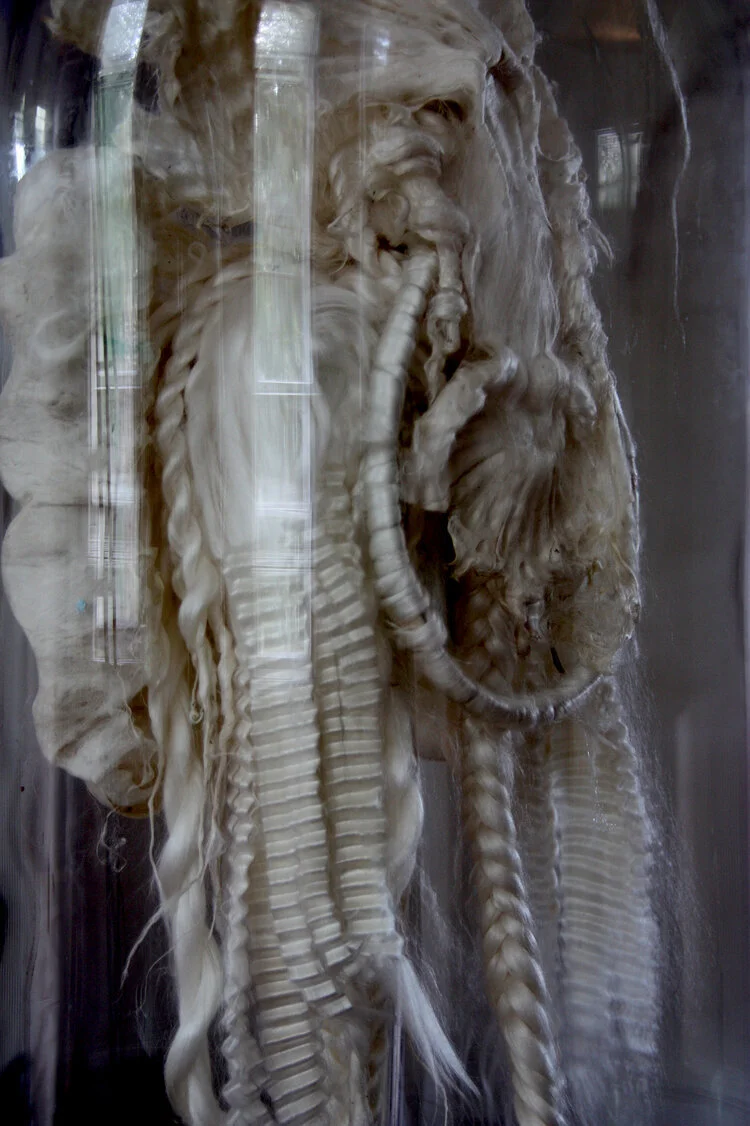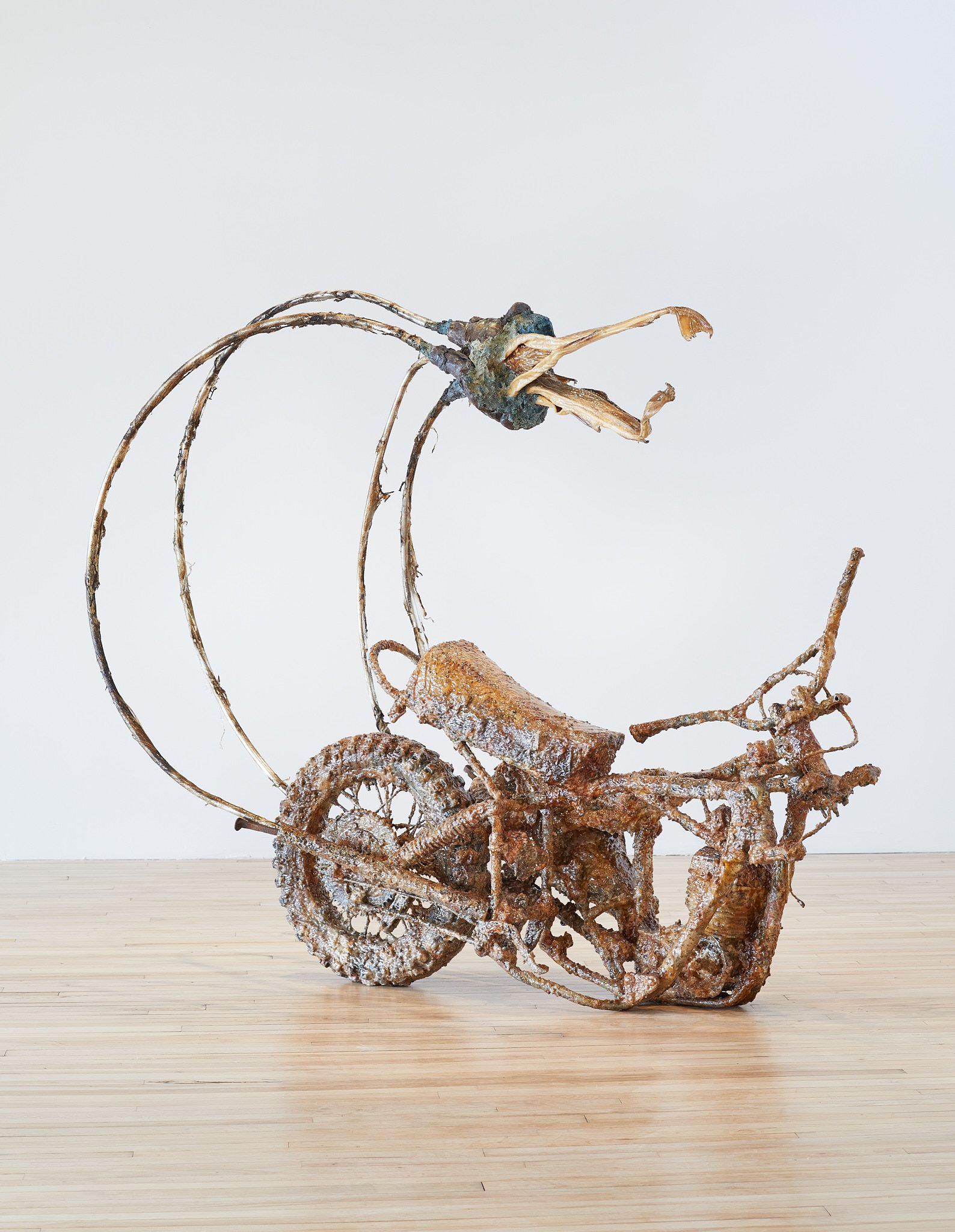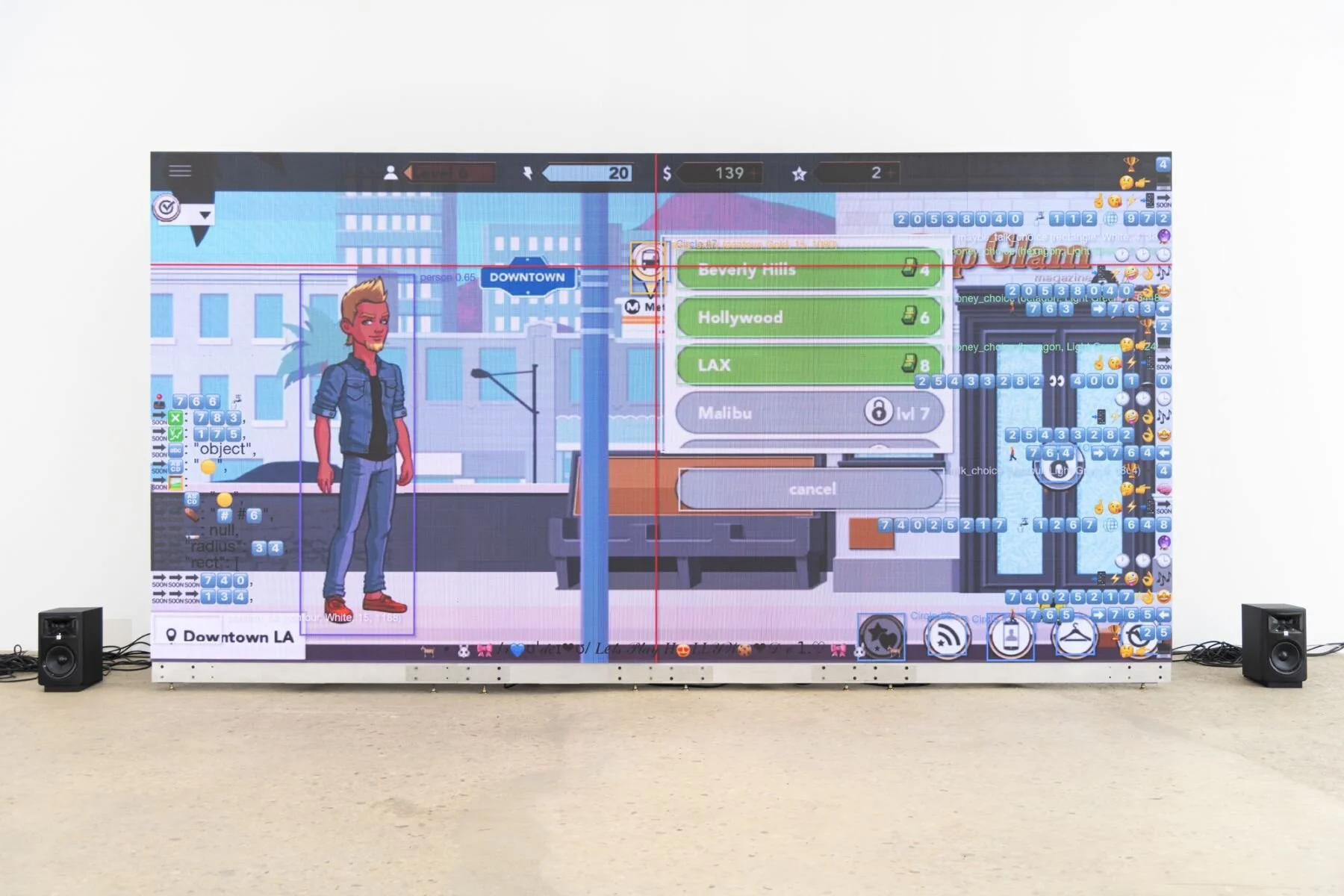Going for Baroque at SPRING/BREAK Art Show 2020
It seems appropriate to hold 2020’s SPRING/BREAK Art Show, a fair themed this year around baroque excess, just blocks away from Billionaire’s Row. The baroque was an era of decadence: the decay of Renaissance rationalism into theatrics, spectacle, and opulence. Today’s world seems similarly degenerate, with our theater of choice being fake news and social media rather than the opera, and the wealth being hoarded by billionaires instead of absolute monarchs. The baroque had Versailles; we have Trump Tower. The only real difference is that Versailles had better decorators.
Pablo Garcia-Lopez, Another civilization, 2019, natural silk fibers, 12x12x24 inches. Image courtesy of the artist.
Some projects took the fair’s theme literally and have works resembling historical baroque art. Equity Gallery’s project Fragments of Luxury, curated by Michael Gormley and Charlotte Kent, mixes baroque ornamentation with literal decadence: a sense of decay, as if the work is actively crumbling away. Pablo Garcia-Lopez’s intricate silk fiber sculptures are presented under heavy-looking glass cake plates, as if they were hermetically sealed under a vacuum to prevent spoilage. Garcia-Lopez’s sculptures feature delicate silk serifs and arabesques that look like they could be blown away into nothingness by a stray gust of wind, exemplifying the delicacy of baroque ornamentation.
Pablo Garcia-Lopez, Another civilization (detail), 2019, natural silk fibers, 12x12x24 inches. Image courtesy of the artist.
Tableau Vivant, featuring the work of Anna Cone, Max Colby, Kirstin Lamb, and Victoria Udondian, exhibited a more literal interpretation of the theme as well. A crimson wall holds an overwrought baroque frame containing a digital collage by Anna Cone, mashing up images of women taken from photos of old master paintings. This remix speaks to what Walter Benjamin, in The Origin of German Tragic Drama, called the baroque’s tendency to “pile up fragments ceaselessly.” The historical baroque wasn’t inventive, but rather repurposed existing content and mutated it into new forms. Cone’s digital collage does something similar to the baroque itself, merging bits and pieces of the era’s paintings into a contemporary, neo-baroque work.
Installation view of Tableau Vivant. Image courtesy of the curators.
David B. Frye’s offering, Milking the Golden Bull, curated by Mary Gagler, features a kinetic sculpture of the titular bull in the middle of the exhibition space, with a white figure kneeling in a vain attempt to milk it. The figure’s hands, with thumbs and forefingers wrapped around the pizzle, make the infamous “white power” symbol used by the alt-right. The work takes its inspiration from the biblical story of the golden calf, a false idol worshipped by the ancient Israelites in place of God. As the story goes, while Moses was on Mt. Sinai for forty days and nights, Aaron and the other Israelites—who thought Moses might never come back—made an idol out of everyone’s gold jewelry to take the place of their actual god: a distraction.
Installation view of David B. Frye’s Milking the Golden Bull, curated by Mary Gagler. Image courtesy of the artist and curator.
The historical baroque was an era of idolatry, or, at least, people accusing each other of it. In Europe, Protestants denounced the Catholic cult of the saints and veneration of relics as idolatrous practices, while the latter found the former’s sola scriptura view of the Bible to be similarly problematic. In a wider view, Europeans accused the native cultures they encountered during the age of exploration as being primitive and idolatrous, a convenient excuse to subjugate and colonize them. Our current era could also be seen as idolatrous, with the masses idolizing certain politicians actively working against their own interests. Frye’s paintings create an allegory of contemporary idolatry, drawing from art history and current events to paint a picture of a spectacular golden idol that distracts people from what’s actually going on.
Artist David B. Frye demonstrating his work’s kinetic action. Image courtesy of the artist and curator.
There are theorists who call the world today “neo-baroque”. There are certainly parallels in the imbalances of wealth and power in both eras, or the exploitation of vulnerable peoples by colonizing forces, but there are similarities on a more fundamental level. The concept of truth has been problematized in both the baroque and the present. Back then, the abyss between reality and appearances was exploited by those in power to produce dazzling spectacles that reinforced the control of church and state. Now, this abyss has swallowed us. The reality and truthfulness of anything is never certain—we read websites to debunk the news, and other sites to debunk the debunkers—and this gnawing uncertainty is again being used as a tool to seize power and wealth. The baroque never really went away, and if the art at SPRING/BREAK this year is any indication, there are plenty of artists who—consciously or not—are caught in this eternal return of the same.
SPRING/BREAK Art Show
March 3 - 9, 2020 (11 to 8pm)
625 Madison Avenue















